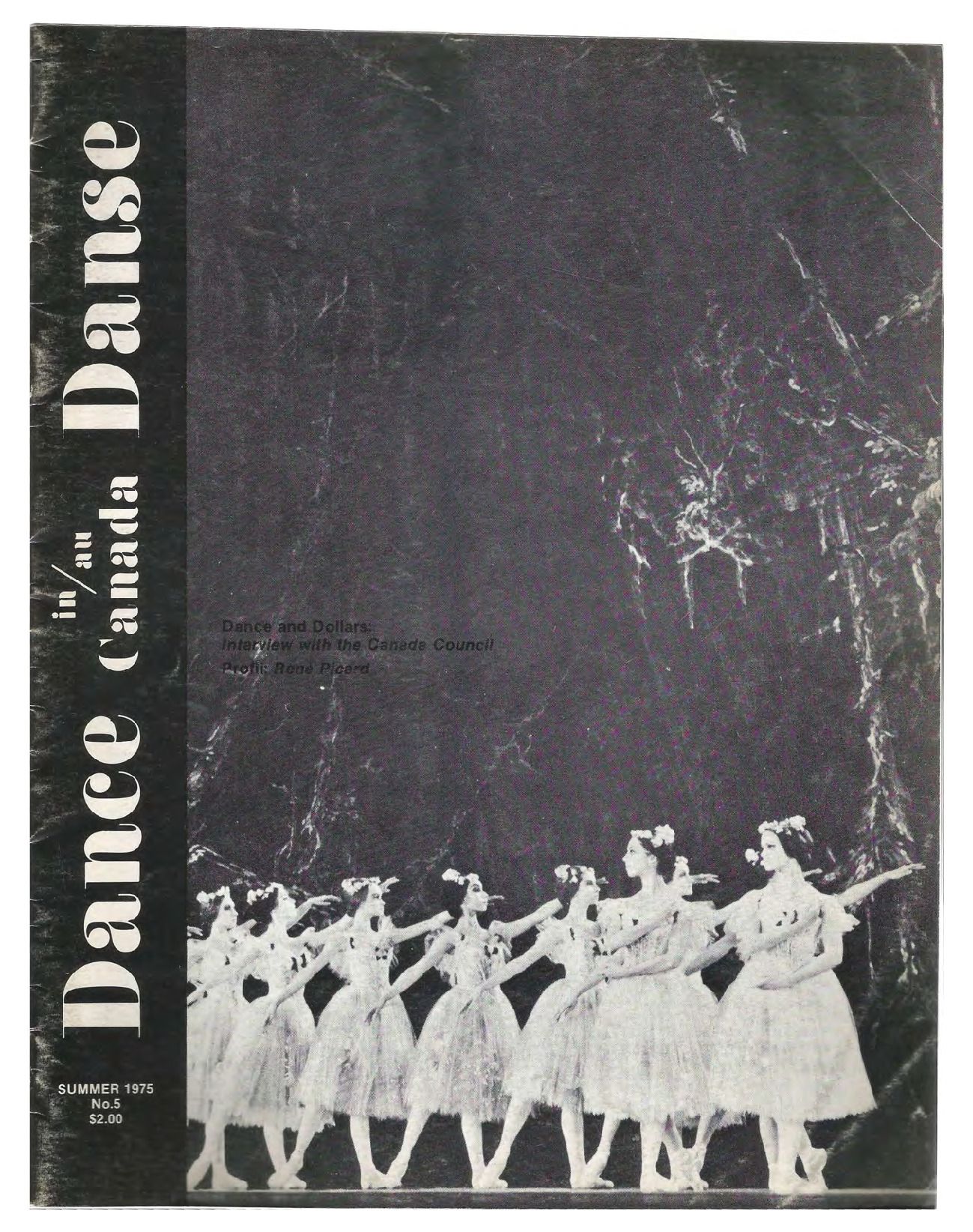Dance in Canada Magazine Number 5, Summer, 1975
Added 29th Apr 2021 by Beth Dobson (Archives and Programming Assistant, DCD) / Last update 18th Feb 2022
The description of this Item
Contains the following articles:
- Editorial by Susan Cohen
- Dance in Dollars: Interview with the Canada Council
- Profil: René Picard
- Noticeboard
The collections that this item appears in.
Tag descriptions added by humans
Ballet
Dance in Canada Association
René Picard
Susan Cohen
Anna Wyman Dance Theatre
Toronto Dance Theatre
Modern Dance
Funding
Schools
Training
Dance in Canada Conference
Celia Franca
David Haber
Murray Farr
The National Ballet of Canada
Contemporary Dance
Helen Jones
Karen Kain
Monique Michaud
Peter Brinson
Timothy Porteous
Vincent Warren
Les Grands Ballet Canadiens
National Ballet School
Royal Winnipeg Ballet School
Giselle
Tam Ti Delam
Award in Choreography
Budgets
Grants
L'Ecole Superieure de Danse
Description of the objects in this Item
01/07/1975
Magazine
Dance in Canada Magazine Number 5, Summer 1975
Dance Collections Danse
DCD's accession number for this Item. It is the unique identifier.
Auto-generated content
Tag descriptions added automatically
Auto-generated identification of objects in this Item
An autogenerated description of this Item
Auto-generated number of faces in the Item

